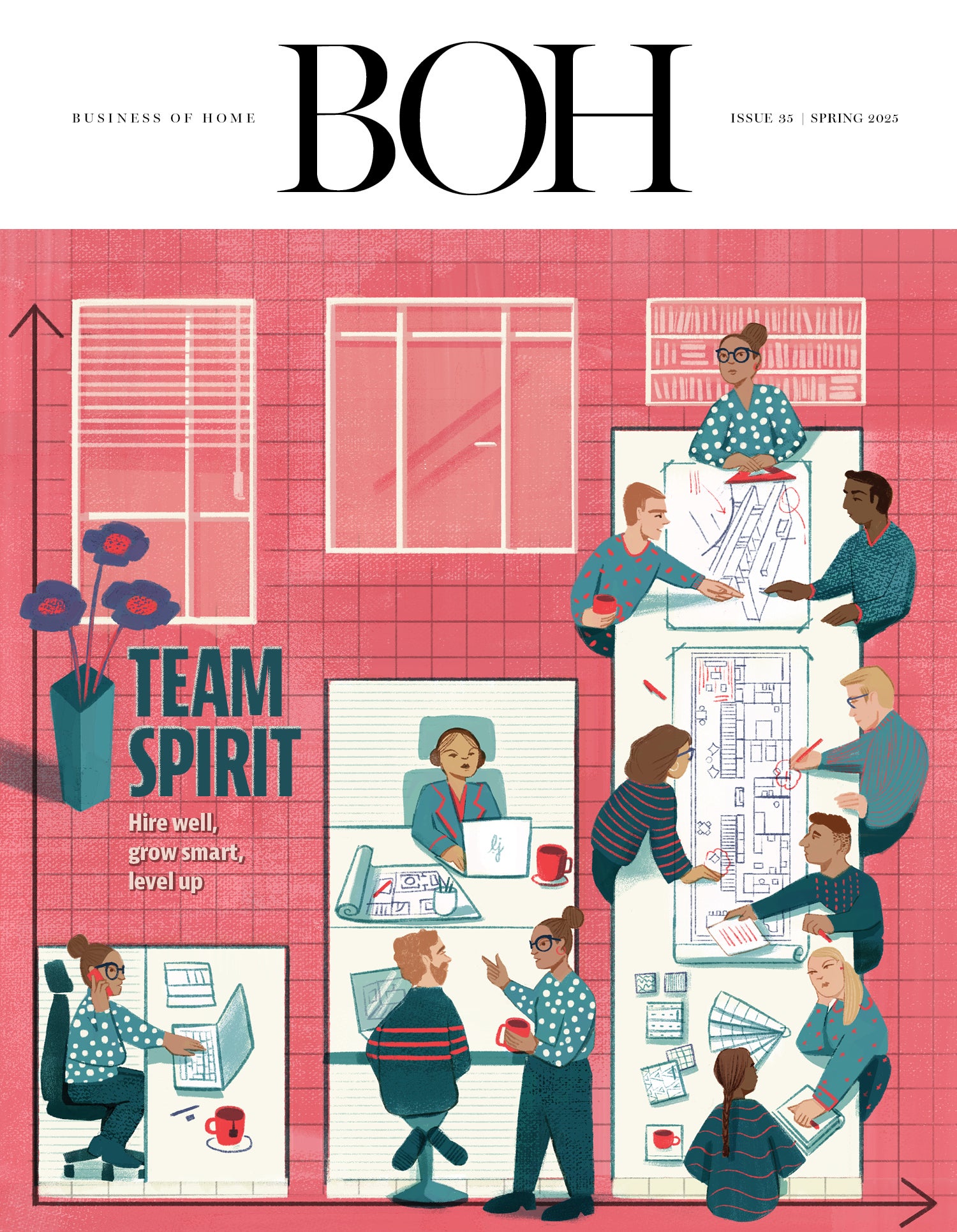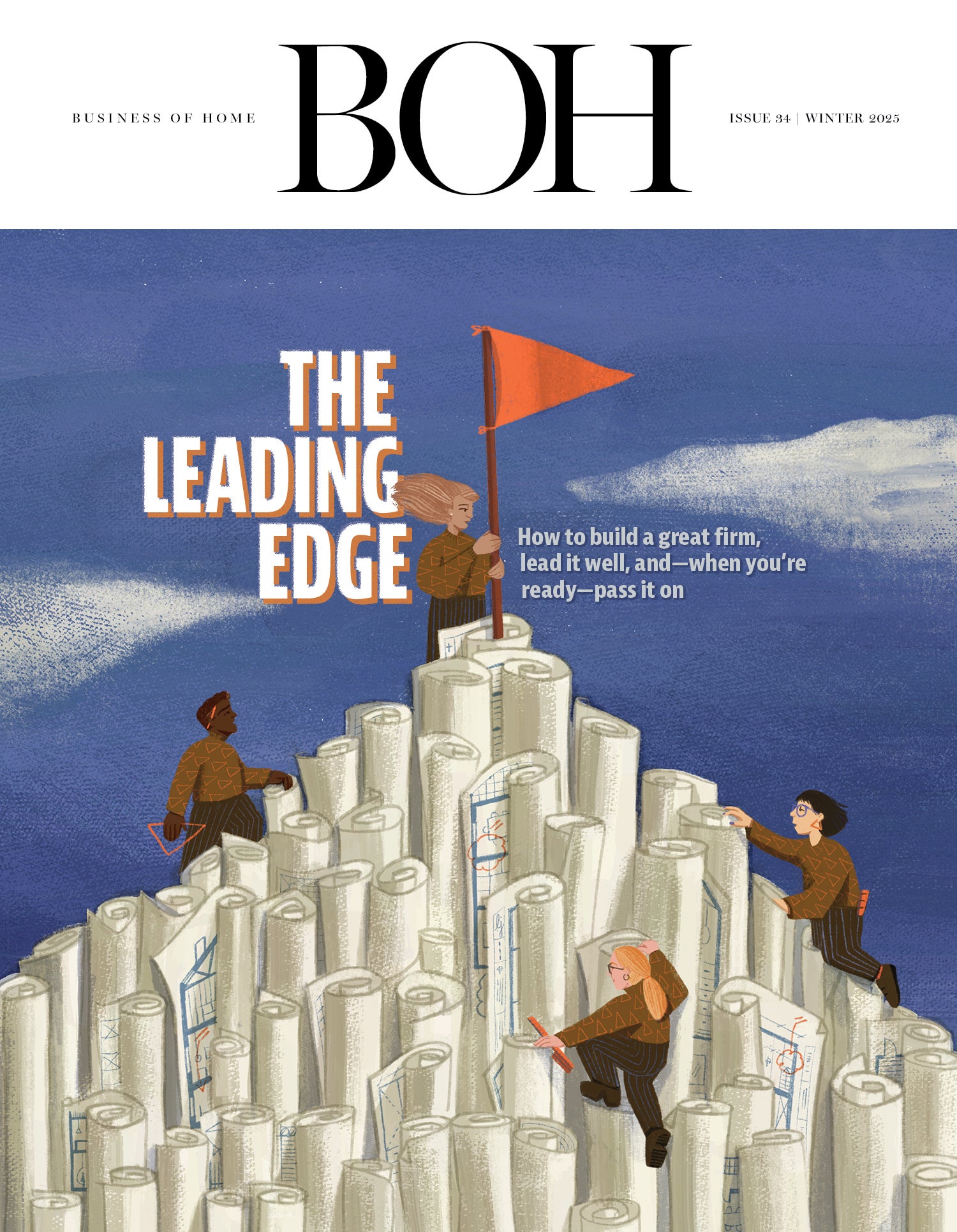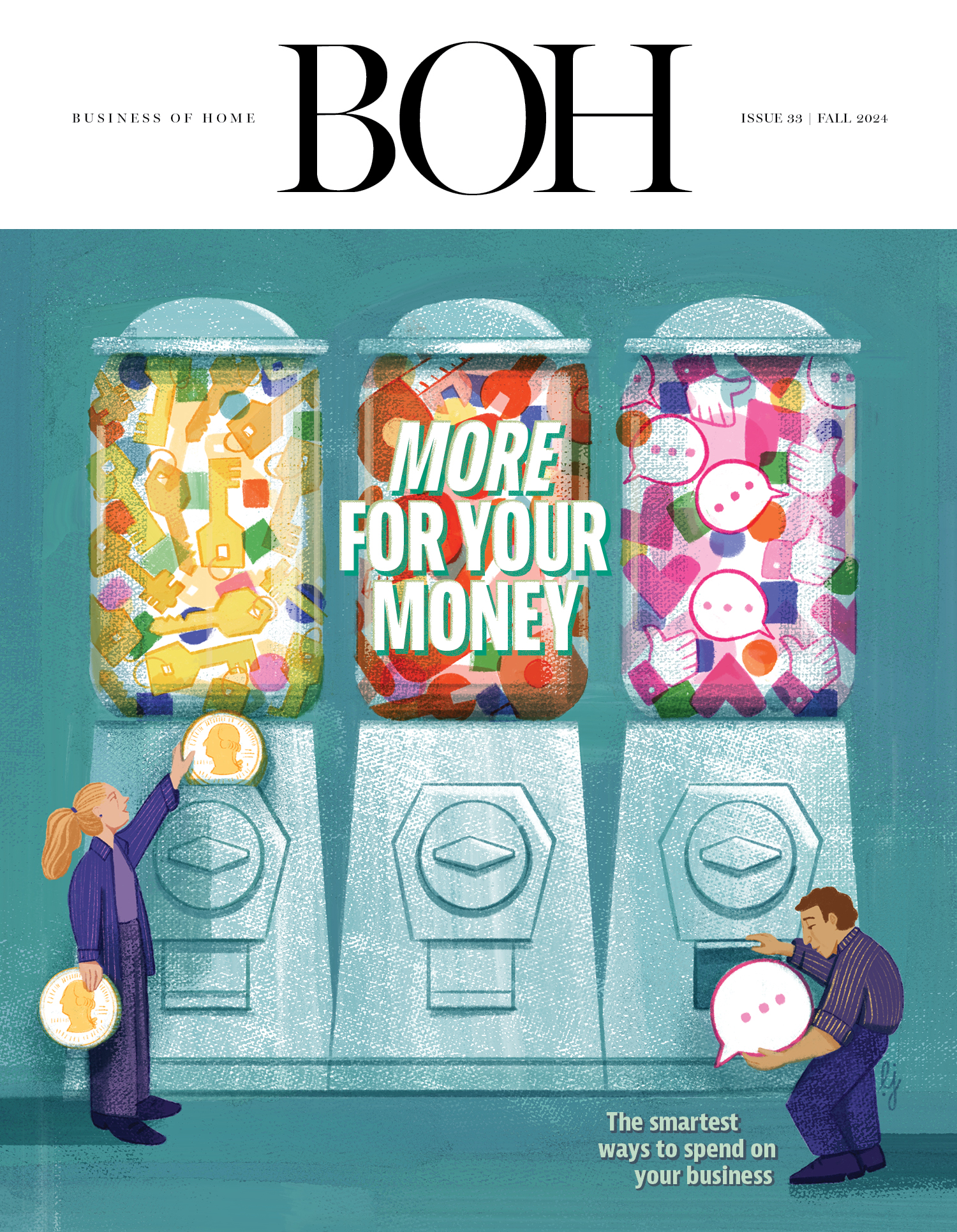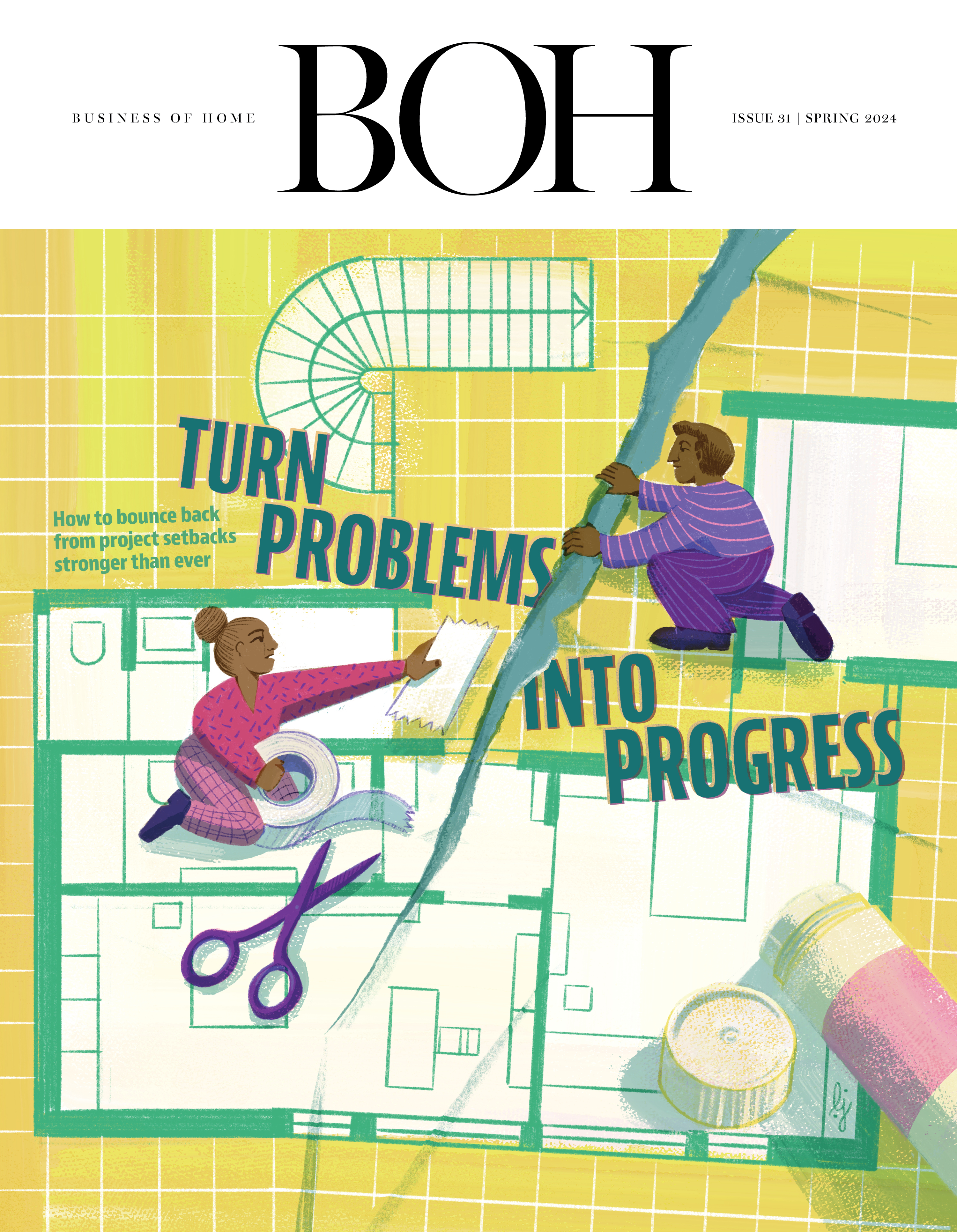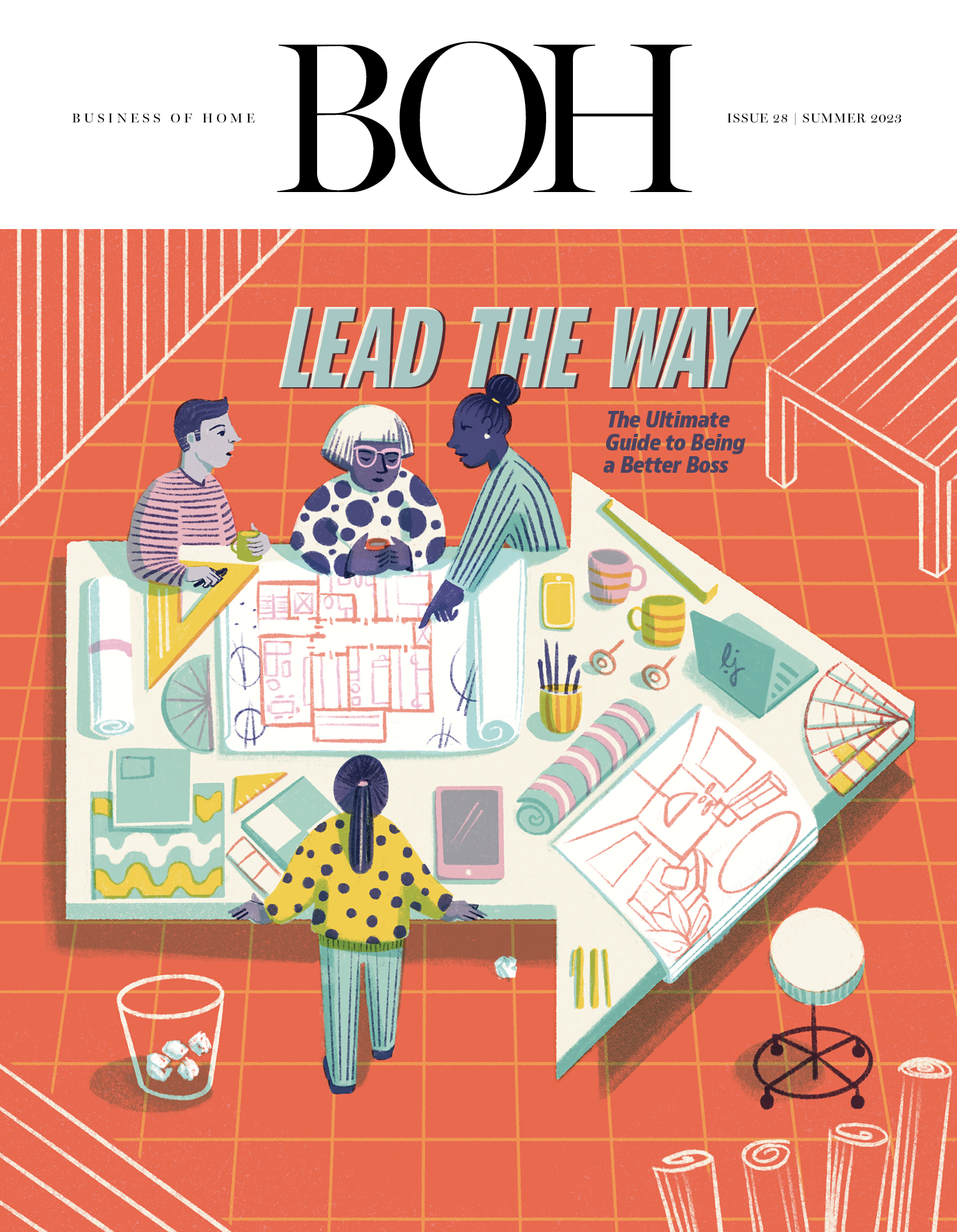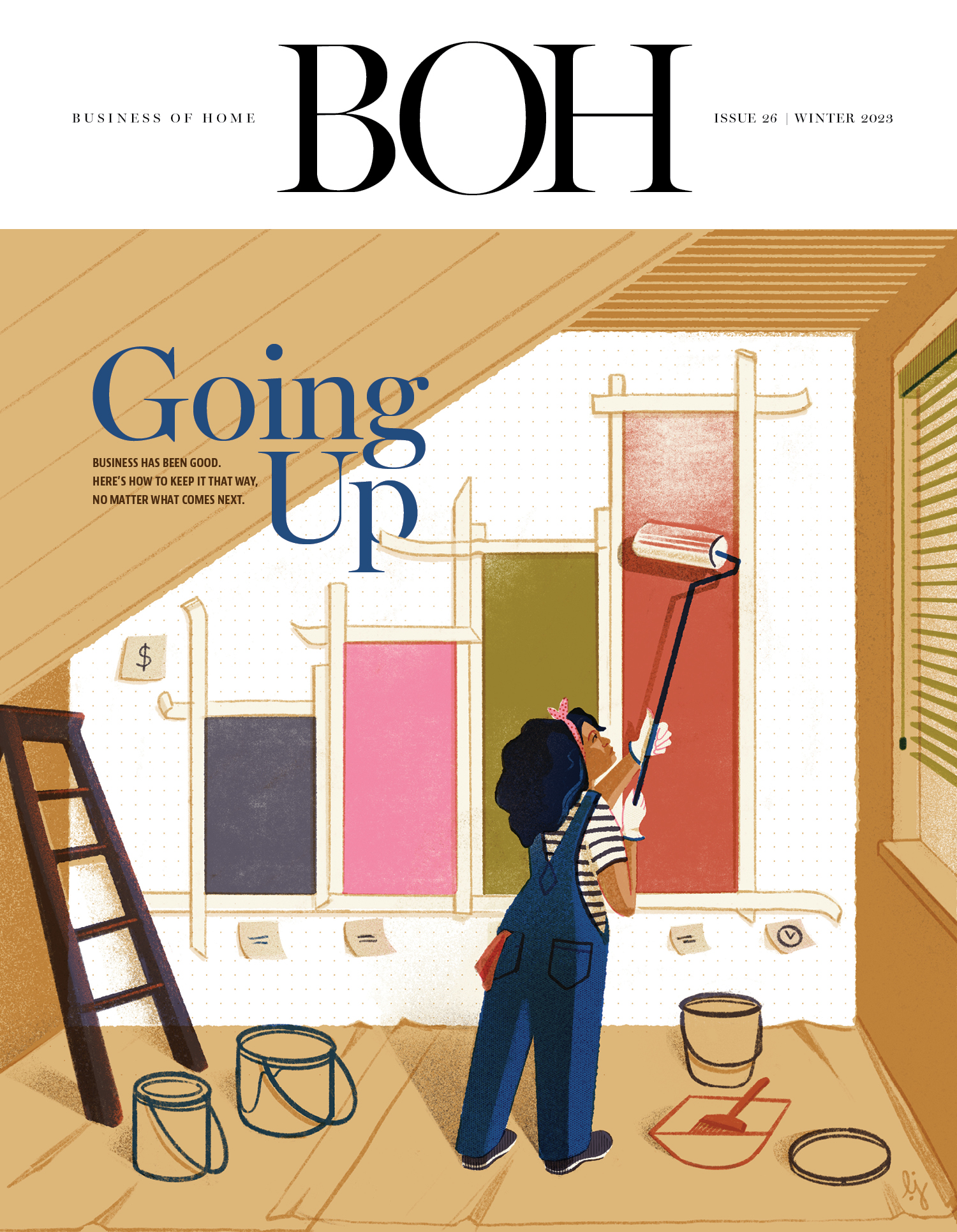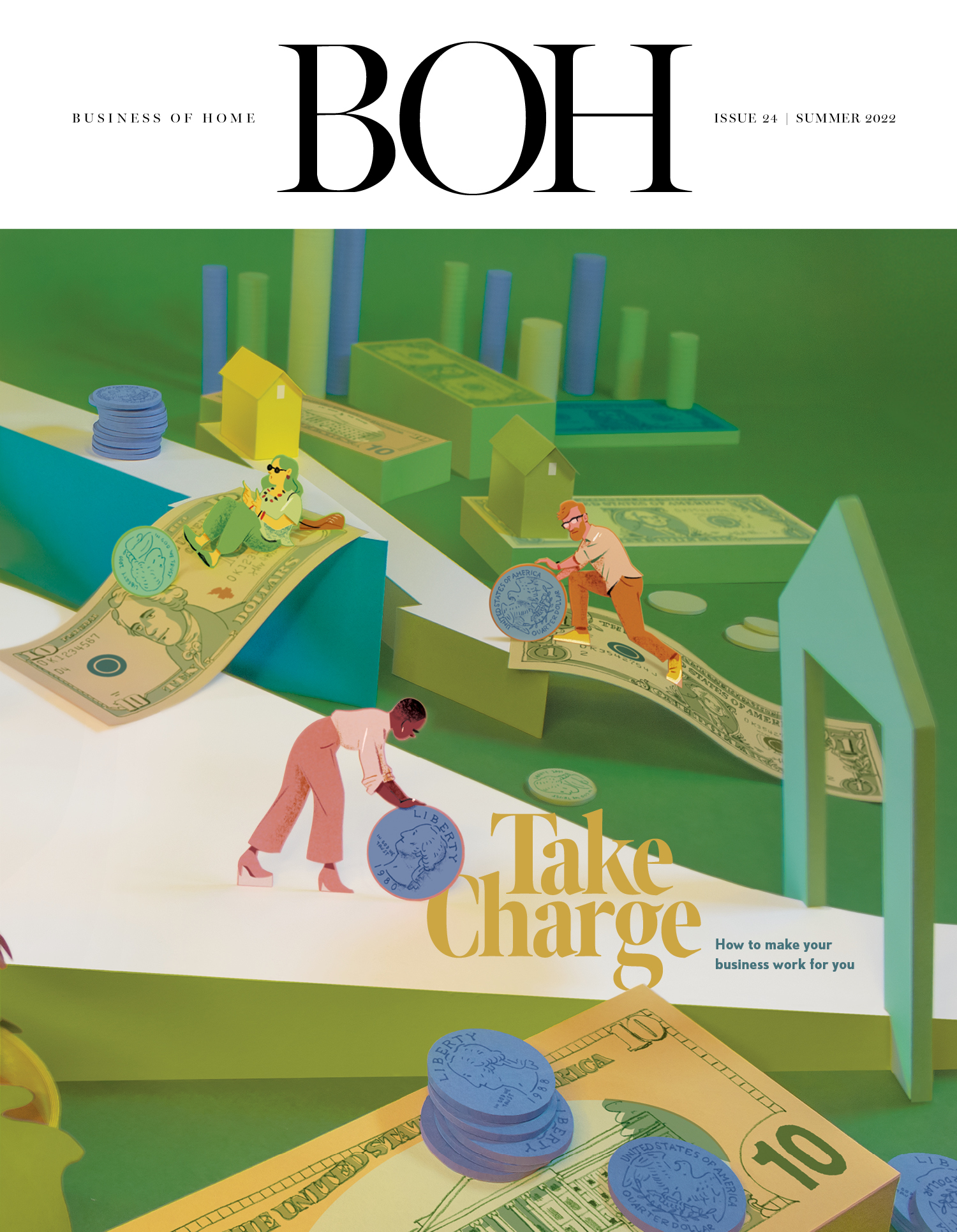This is a rotten week to be in the furniture business. And coming just two weeks before the industry gets together in High Point, North Carolina, for Spring Market, the timing could not have been worse.
Despite the 90-day reprieve from the vast majority of the tariffs that were announced last Wednesday, the astronomical levies being thrown back and forth between President Donald Trump and China—a “my tariffs are bigger than yours” contest—is wreaking havoc for just about everybody in the furniture business, with suppliers and retailers alike caught in the crosshairs. The rest of the home furnishings business—categories like lighting, home textiles and housewares—aren’t faring much better.
For the past week, industry executives fretted about, well, everything. But yesterday, Trump—facing enormous pressure from business leaders, a tanking stock market and a massive hit to U.S. Treasuries—postponed the implementation of the sweeping tariffs announced the week before, save a blanket 10 percent levy on all imports. The reprieve did not include China—additional duties on imports brought the total to 125 percent.
Today, there was a clarification from the White House: The 125 percent was on top of the existing 20 percent, so the actual total now in effect is 145 percent—a number that has stuck for at least a few hours as of press time. China responded to yesterday’s escalation with an 84 percent tariff on U.S. goods, which went into effect today—though who knows what the number will be by the end of the week.
Since the first Trump administration’s tariffs on Chinese imports, importers—particularly furniture vendors and retailers—have moved a lot of production out of China. In general, those operations moved elsewhere in Asia, primarily to Vietnam, Indonesia and the Philippines. (Very little of it returned to the U.S.) The delay in massive global tariffs means that the importers who left China will breathe a sigh of relief—kind of. They’ll still face a new 10 percent tax on their imports, and there’s nothing to suggest that this isn’t just another Trumpian kick-the-credenza-down-the-road stunt that forces the industry to go through it all over again this summer when the 90-day period ends.
On April 16, business consultant and certified DISC practitioner Jody Seivert shares how to foster more positive relationships, reap the financial benefits, and relish the sweet relief of stress-free business dealings. Click here to learn more and remember, workshops are free for BOH Insiders.
In the meantime, companies stuck in China are coming to grips with a terrifying reality: If these tariffs hold and neither side backs down, a lot of home retailers will pretty much be out of business. For many of the products they sell, there are no alternative sources of supply—and tariffs that essentially double their prices will be the kiss of death.
Some importers, particularly of lower-priced and smaller goods, loaded up inventory levels in anticipation of tariff chaos—that now looks like a smart move. They could conceivably have enough merchandise to carry them into late spring or even early summer before they need to start replenishing their supply. As with the early days of the pandemic, when there was a consumer feeding frenzy, any inventory could be good inventory—even the stuff that has sat in the back of the warehouse for years and was formerly deemed unsalable. As RH CEO Gary Friedman noted during his quarterly call with analysts last week, environments like these suddenly change the narrative about holding excess inventory: “It’s your friend.”
That said, going forward, certain product categories are in more danger than others. Here’s the state of play for major retailers that still need Chinese goods.
Furniture
Most wood furniture is now being made outside of China. Yet many of the components used in the final products still come from China, often nearly exclusively, such that excessive Chinese tariffs still weigh on the category. Ethan Allen is one company that makes most of its furniture in North America, which seems likely to put it in a better position than competitors that rely heavily on Asian sources of supply. Williams-Sonoma, RH, La-Z-Boy and Havertys make much of their upholstered product in the U.S., but often using Chinese components, so they will see some costs go up. With the 90-day reprieve, there may be opportunities to load up on goods from non-Chinese supply sources, but this may be a temporary fix.
Upholstery
At the retail level, most upholstery fabrics come out of China, with little to no alternatives save for limited domestic production or expensive premium textiles from Europe. This could end up being the real Achilles’ heel for U.S. sofa makers who thought they were immune to Chinese trade wars. We could see real shortages here relatively quickly, especially given the higher turnover rates fabrics usually have. It won’t take very long to clean out current supplies, especially if Americans start buying in anticipation of higher prices.
Home Textiles
About a third of all sheets and towels come from China, especially polyester and poly-blend products. (China has an overwhelmingly dominant market share on the ubiquitous microfiber bedding goods.) But it’s not just bed and bath linens—most curtains, windowcoverings, tablecloths and kitchen textiles come from China. (So too do most hard bath goods, like toothbrush holders.) These are the kinds of products that aren’t going to be panic-bought, but they are the types of items where doubling the retail cost will price them out of the market.
Lighting
This industry was one of the first home categories to migrate to China, and it has stayed ensconced there ever since. These are goods not easily transferred to other countries for manufacturing, as there are whole subsets of networks of lighting component suppliers in China that don’t exist elsewhere. And don’t even get started on UL certification, an excruciating process that can take a long time to master.
Housewares
This broad category, which includes most things with plugs—kitchen appliances, vacuum cleaners, fans and other household electrics—is predominantly manufactured in China. Like lighting, there are a lot of moving pieces within the internal supply chains to make these items, meaning their production is not easily pushed to another country. Most cookware and flatware is made in China too, though some has shifted elsewhere even as the capital costs to set up manufacturing for these products are considerable. Again, like lighting, housewares can’t absorb massive increases in retail prices. Consumers will simply put off their purchases—unless your toaster breaks, you probably aren’t in the market for a new one.
What’s the bottom line for all of these categories—and the vendors and retailers who make and sell them? Several have said off the record that they have about a three-week window to get this sorted out. If the sky-high tariffs from China remain—and the killer rates for the rest of the world return in three months—they will simply be out of business. That’s not an exaggeration or excessive drama: It’s fact.
____________
Warren Shoulberg is the former editor in chief for several leading B2B publications. He has been a guest lecturer at the Columbia University Graduate School of Business; received honors from the International Furnishings and Design Association and the Fashion Institute of Technology; and been cited by The Wall Street Journal, The New York Times, The Washington Post, CNN and other media as a leading industry expert. His Retail Watch columns offer deep industry insights on major markets and product categories.



